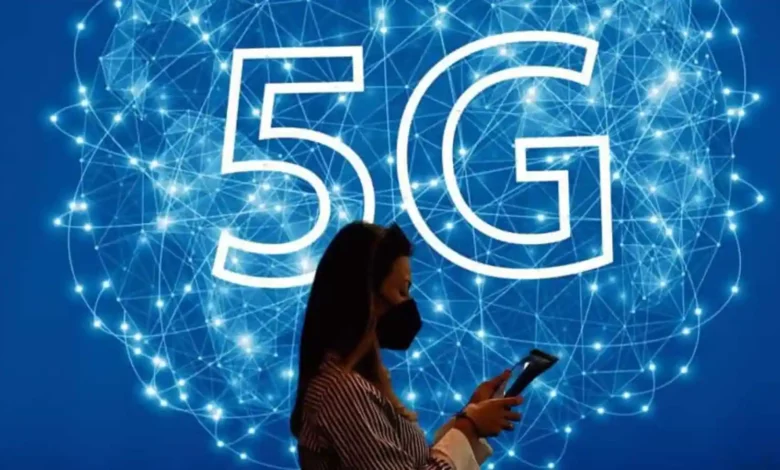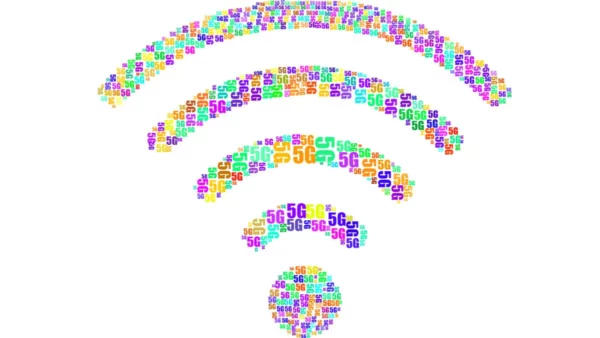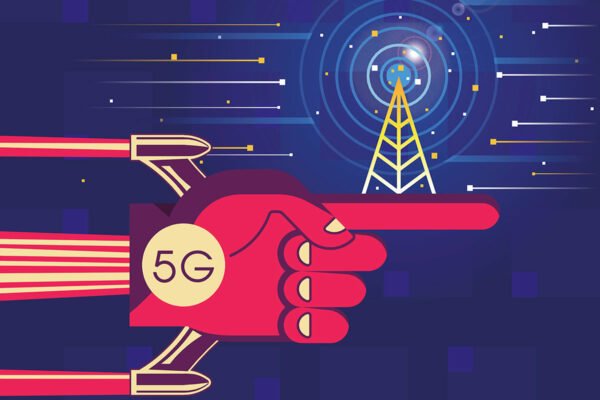5G in India: Here’s how 5G technology will change your life

5G in India: Here’s how 5G technology will change your life
On Saturday, Telecom Minister Ashwini Vaishnaw claimed that the 5G rollout will begin in 20-25 cities and towns by the end of the year and that India will continue to set rate standards as new services are carried out, despite its current data prices being substantially cheaper than the worldwide average.
According to Vaishnaw, the 5G deployment will begin in August or September.
According to the minister, India is creating 4G and 5G stacks and is poised to strengthen its position as a trustworthy source for the globe in digital networks.
Vaishnaw, speaking at a media event, stated that nations are eager to offer precedence to India’s 4G and 5G products and technologies.
According to the minister, an “important” rule is in the works to address the issue of unsolicited calls, which will allow the KYC identity name of a caller to be displayed when someone phones.
“I can state with confidence that 5G deployment will commence in at least 20-25 cities and towns by year-end,” he said of 5G services.
When asked about the cost of 5G services, Vaishnaw pointed out that data rates in India are now under $ 2, compared to a global average of $25.
“We are already the cheapest in the world, by at least a factor of ten…we are ten times cheaper than the rest of the world, and that tendency will continue in other areas,” he stated. India has established 4G and 5G technology stacks as it prepares to launch 5G services.
The minister stated that the world has taken notice of India’s accomplishments and showed genuine interest in the indigenous technologies being developed, as well as its determination to match global strides in 4G and 5G and to assume the technology lead in 6G.
“The telecommunications network that supports mobile phones must be reliable. The name of India is at the top of the list of reliable network providers. When India creates a technology, the rest of the world takes notice, “he stated.
It’s worth noting that 5G services will bring high speeds — roughly 10 times faster than 4G — as well as new services and business models.
The government plans to auction nearly Rs 4.3 lakh crore in airwaves capable of providing fifth-generation or 5G telecom services, like ultra-high-speed internet. It has also given the green light for IT companies to build their own 5G networks.
The 5G auction will begin on July 26, 2022, and will put up to 72 GHz of the spectrum on the market.
Regarding unsolicited calls, Vaishnaw says new legislation is in the works that would allow the KYC name (as entered in the mobile SIM application) to be shown when a call is made. This is presently the subject of a consultation procedure.
“This will be applied across the country once industry stakeholder dialogue is concluded,” the minister stated.
In response to a question about customers’ poor download speeds, the minister noted that India’s average data use, at 18 GB per month, is higher than the global average of 11 GB per month.

“India’s data usage is higher than that of wealthy countries. Infrastructure needs to be better funded. Massive infrastructure improvements are critical in light of data rates, call dropouts, and call quality issues, “he stated
The minister stated that the telecom sector reforms announced in September of last year had restored stability to the industry.
He went on to say that in cities like Delhi, Hyderabad, and Mumbai, as well as others, tower installations are frequently challenging due to public opposition to mobile towers. He asserted that India’s EMF radiation regulations are stricter than international standards and that there is no cause to be concerned in this regard.
What are the benefits of 5G technology?
Education:
a) The full potential of digital education can be unleashed with 5 G’s enhanced mobile broadband (eMBB) feature;
b) Expanding on PM eVidya, it can deliver high-quality educational content to every student in the country through mobile applications;
c) 5G will also provide a major impetus to digital universities;
d) Vocational training programmes delivered in the ‘phygital’ model can improve the employability of youth and women by providing hands-
Healthcare:
a) The 5G feature of ultra-reliable low-latency communication (URLLC) will enable user-friendly point-of-care diagnostics and the establishment of much-needed connected ambulances;
b) 5G will also considerably increase access to world-class medical advice, resulting in better follow-up care.
c) A hospital-run private 5G network will allow even a small group of doctors and nurses to deliver high-quality treatment to hundreds of patients by monitoring vital signs and preserving electronic health records.
NextGen banking:
a) Both eMBB and URLLC features will play essential roles in financial inclusion;
b) With the Unified Payment Interface, India has already established itself as a global leader (UPI). With the use of Geospatial Information Systems, India may advance to the next level of simple, frictionless, and secure payments, such as ‘one-tap payment’ and ‘cashierless shop’ models.
c) The payments bank model can be evolved into a fully mobile formal banking system by taking small steps. Citizens could securely access various bank services through a virtual branch experience, thereby increasing India’s banking population.
Transportation and mobility:
a) A network of electric vehicles (EVs) and charging stations can be established, maximising the availability of charging infrastructure and thus increasing the cost-effectiveness of the EV ecosystem;
b) The massive machine-type communication (mMTC) feature of 5G can aid in the integration of initiatives across transit systems, such as FASTag for toll and entry tax. Not only would this increase transportation efficiency, but it will also lower our carbon footprint.
c) India can reduce long wait times and port inventory congestion by utilising the mMTC and URLLC functionalities. d) Real-time automated surveillance of public areas and traffic utilising city-owned private 5G networks would improve public safety and congestion in India’s metro cities, thanks to the deployment of machine vision with software-enabled automatic-guided cars.
Agriculture: Farms can be outfitted with various sensors to track the elements that affect crop health in real-time. Even small farmers with limited virtual training can use 5G to increase irrigation efficiency and agricultural harvests.
Manufacturing and Industry: The cornerstone of industry 4.0 will be 5G private networks. These networks connect a variety of IoT (Internet of Things) sensors and devices and use sophisticated algorithms to automate the scheduling of various processes.
These networks can potentially increase efficiency by 2-4 times while lowering carbon emissions. These benefits, however, are not limited to the manufacturing sector. Many of the benefits of 5G will be available to any industry that can digitise and plan procedures.
Renewable energy: Energy farms (mainly wind and solar farms) currently have several sensors installed, but because they are located in remote areas, there is a delay in reaction. Their response time and efficiency will be drastically improved with 5G.
Governance and public safety:
a) With faster and safer digital identity verification, service delivery and citizen engagement activities can be improved. As a result, direct benefit transfers and other similar programmes will be implemented more quickly.
b) Using the network function virtualisation feature of 5G, deploying IoT-based systems on similar networks would boost the efficiency of Smart Cities Mission projects.

Here’s how 5G technology will change your life
According to Ericsson’s analysis, “5G for business: a 2030 market compass study,” the estimated value of 5G-enabled digitisation revenues for service providers in India by 2030 will be around USD 17 billion. Operators will be able to manage better their customers’ expanding data needs thanks to 5G, as well as generate new revenue streams.
“5G will create a smarter and more connected world for customers.” We’ll see use cases like better mobile broadband (eMBB) and fixed wireless access in the early stages of 5G. (FWA). These will aid in the reduction of India’s poor fixed broadband penetration and improve consumers’ data experience while on the move. 5G will also help communications service providers fulfil consumers’ expanding data demands more effectively, resulting in a better overall consumer experience.
According to an Ericsson analysis, the transition to 5G would result in a cost per gigabyte that is ten times cheaper than the current 4G,” Nitin Bansal, Ericsson’s Managing Director, India Head-Networks, Market Area South-East Asia, Oceania, and India, told BGR.in.
Consumers will be able to watch 4K video on their phones, use AR/VR, mobile gaming apps, and a number of other immersive activities and new applications thanks to 5G. 5G offers benefits in almost every element of human life, from security to entertainment and beyond.
“With the introduction of 5G, the user experience will change dramatically in terms of data download rates, up to three times greater spectrum efficiency, and extremely low latency, and next-generation technologies will become ubiquitous.” “With industry alliances, research, and the largest number of 5G devices, OPPO is ready and equipped to provide its users with a smooth, supercomputing experience,” Tasleem Arif, VP and R&D Head, OPPO India, stated.
5G has already piqued the imagination of Indian consumers, who are willing to pay a premium for its capabilities. According to a Consumer Lab survey, at least 40 million Indian smartphone users are projected to adopt 5G in the first year after it becomes accessible. They are willing to spend 50% more for 5G plans with bundled digital services, compared to just 10% more for 5G connectivity.
According to the Ericsson Mobility Report, 5G will account for roughly 39% of mobile subscriptions in India by the end of 2027, with around 500 million subscriptions.
“5G will be a force multiplier in realising India’s goal and objectives to become a $1 trillion digital economy by 2025,” says the report. India is getting closer to achieving a 5G-led future, with a robust base of 5G-capable devices already in place and approaching 5G auctions. 5G is key, both from a digital connectivity perspective, as well as to give a strong momentum to the Government of India’s initiatives in embracing, steering and leveraging emerging technologies for greater societal good,” said Prabhu Ram, Head – Industry Intelligence Group (IIG), CMR.
Applications are due on July 8, and the list of applicants will be made public on July 12. On July 22 and 23, mock auctions will take place. The Department of Telecommunications will also hold a pre-bid conference, the location of which will be announced separately on the Department of Telecommunication’s website.
“Integrating and deploying 5G will be key in advancing India’s digital capabilities.” With networked gadgets, it will improve last-mile connections, bridge the digital divide, and make smarter living a reality. We’ve worked hard to make 5G affordable for Indian consumers by providing various options at various pricing ranges. “We are optimistic that the development and adoption of 5G will contribute to overall economic growth while also having a substantial impact on how we communicate, engage, and live,” said Raghu Reddy, Xiaomi India’s Chief Business Officer.
A total of 72097.85 MHz of spectrum will be auctioned off by the end of July 2022, with a 20-year validity period. Spectrum in the Low (600 MHz, 700 MHz, 800 MHz, 900 MHz, 1800 MHz, 2100 MHz, 2300 MHz), Mid (3300 MHz), and High (26 GHz) frequency ranges will be auctioned.
Telecom Service Providers are projected to use the Mid and High band spectrum to roll out 5G technology-based services capable of providing speeds and capacities that are roughly 10 times better than what is now possible with 4G services.
“The most recent development in the spectrum auction process has undoubtedly yielded some benefits. The government’s decision to eliminate the mandatory upfront payment obligation, allow spectrum payments to be made in 20 equal annual instalments, and allow spectrum surrender after ten years are all positive moves in the right direction. Given the poor financial health of India’s telecom business, this will be good in terms of relieving cashflow constraints. Furthermore, some of these decisions appear to be made with the long-term in mind, making it easier for operators to plan for new technologies without incurring the financial burden/liabilities associated with previous technology.” Counterpoint Research’s Research Director, Tarun Pathak, was mentioned.
The country’s 4G ecosystem is now heading to 5G indigenous development, according to a statement from the Ministry of Communications. The government claims that establishing a 5G test bed in eight of India’s leading technology institutes is hastening the debut of domestic 5G technology in the country.
The PLI (Production-Linked Incentives) programmes for mobile handsets and telecom equipment, as well as the introduction of the India Semiconductor Mission, are intended to contribute to developing a strong ecosystem for the launch of 5G services in India.
“5G will be critical if India is to become the world’s first digital superpower. Because of the delay in the commercial introduction, we haven’t been able to capitalise on the impact fully it can have. Non-telco participation in the 5G ecosystem would spur innovation and use case creation for connected and smart living, according to Faisal Kawoosa, founder and chief analyst of market research firm techARC.





